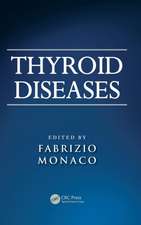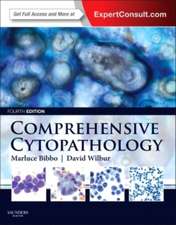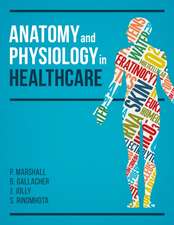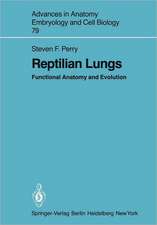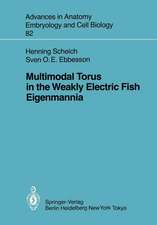The Cytoskeleton and Cell Motility: Tertiary Level Biology
Autor Terence M. Prestonen Limba Engleză Paperback – apr 1990
Din seria Tertiary Level Biology
- 15%
 Preț: 637.59 lei
Preț: 637.59 lei -
 Preț: 381.00 lei
Preț: 381.00 lei -
 Preț: 382.95 lei
Preț: 382.95 lei -
 Preț: 379.86 lei
Preț: 379.86 lei -
 Preț: 381.59 lei
Preț: 381.59 lei -
 Preț: 387.20 lei
Preț: 387.20 lei -
 Preț: 362.82 lei
Preț: 362.82 lei -
 Preț: 386.99 lei
Preț: 386.99 lei -
 Preț: 382.18 lei
Preț: 382.18 lei - 15%
 Preț: 633.02 lei
Preț: 633.02 lei -
 Preț: 386.00 lei
Preț: 386.00 lei -
 Preț: 379.09 lei
Preț: 379.09 lei -
 Preț: 385.47 lei
Preț: 385.47 lei -
 Preț: 387.20 lei
Preț: 387.20 lei - 18%
 Preț: 721.01 lei
Preț: 721.01 lei -
 Preț: 387.38 lei
Preț: 387.38 lei -
 Preț: 384.48 lei
Preț: 384.48 lei -
 Preț: 382.95 lei
Preț: 382.95 lei -
 Preț: 351.90 lei
Preț: 351.90 lei -
 Preț: 382.36 lei
Preț: 382.36 lei -
 Preț: 380.07 lei
Preț: 380.07 lei - 15%
 Preț: 636.45 lei
Preț: 636.45 lei -
 Preț: 381.59 lei
Preț: 381.59 lei - 15%
 Preț: 660.18 lei
Preț: 660.18 lei -
 Preț: 390.84 lei
Preț: 390.84 lei -
 Preț: 384.31 lei
Preț: 384.31 lei -
 Preț: 385.62 lei
Preț: 385.62 lei -
 Preț: 384.86 lei
Preț: 384.86 lei -
 Preț: 385.08 lei
Preț: 385.08 lei -
 Preț: 378.92 lei
Preț: 378.92 lei -
 Preț: 379.48 lei
Preț: 379.48 lei -
 Preț: 384.70 lei
Preț: 384.70 lei -
 Preț: 404.67 lei
Preț: 404.67 lei -
 Preț: 381.00 lei
Preț: 381.00 lei -
 Preț: 394.71 lei
Preț: 394.71 lei -
 Preț: 376.96 lei
Preț: 376.96 lei -
 Preț: 382.18 lei
Preț: 382.18 lei -
 Preț: 379.09 lei
Preț: 379.09 lei -
 Preț: 382.18 lei
Preț: 382.18 lei - 15%
 Preț: 637.59 lei
Preț: 637.59 lei -
 Preț: 385.47 lei
Preț: 385.47 lei -
 Preț: 380.07 lei
Preț: 380.07 lei -
 Preț: 387.38 lei
Preț: 387.38 lei -
 Preț: 380.25 lei
Preț: 380.25 lei -
 Preț: 418.76 lei
Preț: 418.76 lei
Preț: 381.59 lei
Nou
Puncte Express: 572
Preț estimativ în valută:
73.02€ • 79.56$ • 61.53£
73.02€ • 79.56$ • 61.53£
Carte tipărită la comandă
Livrare economică 23 aprilie-07 mai
Preluare comenzi: 021 569.72.76
Specificații
ISBN-13: 9780216926745
ISBN-10: 0216926742
Pagini: 216
Ilustrații: IX, 202 p. 69 illus.
Dimensiuni: 148 x 210 x 11 mm
Greutate: 0.26 kg
Ediția:1990
Editura: Springer Us
Colecția Springer
Seria Tertiary Level Biology
Locul publicării:New York, NY, United States
ISBN-10: 0216926742
Pagini: 216
Ilustrații: IX, 202 p. 69 illus.
Dimensiuni: 148 x 210 x 11 mm
Greutate: 0.26 kg
Ediția:1990
Editura: Springer Us
Colecția Springer
Seria Tertiary Level Biology
Locul publicării:New York, NY, United States
Public țintă
ResearchCuprins
1 Introduction.- 2 The Molecular Components of the Cytoskeleton.- 2.1 Actin and actin-associated proteins.- 2.2 Microtubules and microtubule-associated proteins.- 2.3 Intermediate filaments.- 2.4 Summary.- 3 Movement within Cells.- 3.1 Axonal transport.- 3.2 Intracellular motility in the Protozoa.- 3.3 Cytoplasmic transport in the ovaries of hemipteran insects.- 3.4 Movement of pigment granules in chromatophores.- 3.5 Cytoplasmic streaming in plant cells.- 3.6 Summary.- 4 Mitosis.- 4.1 Basic steps of mitosis.- 4.2 The mitotic spindle: general properties and design principles.- 4.3 Organisation of spindle microtubules.- 4.4 Mechanisms of anaphase chromosome movement.- 4.5 Summary and conclusions.- 5 Cilia and Flagella.- 5.1 Distribution and waveforms.- 5.2 Basal bodies and rootlets.- 5.3 Structure of the axoneme.- 5.4 Extra-axonemal components.- 5.5 Membrane specialisations.- 5.6 Biochemical complexity of the axoneme.- 5.7 The sliding microtubule model.- 5.8 Behavioural responses of microorganisms and the control of ciliary and flagellar beating.- 6 Crawling Movements.- 6.1 Common features of crawling locomotion.- 6.2 Amoeboid movement.- 6.3 Chemotaxis.- 6.4 Tissue cell locomotion.- 6.5 Myosin and crawling locomotion.- 7 Cell Surface Motility.- 7.1 General account.- 7.2 Gliding.- 7.3 Summary.- 8 Other Mechanisms for Producing Force and Movements.- 8.1 Contractile phenomena.- 8.2 Crawling in nematode sperm.- Further Reading.


